David's Diary: Friday, July 5, 2002
Pompeii
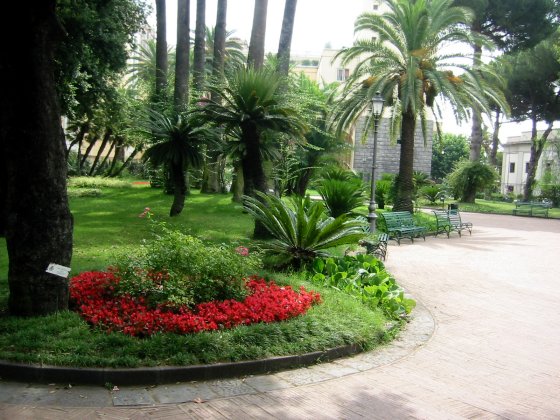
Salerno Park
We were up early and off the boat by 9:00 as we headed off for Pompeii. On our way to the train station, we walked through a park that was near the marina. It is surprising how you do not realize how much you miss things until you encounter them once again. In Pisa, it was the grass in the Camp dei Miracoli that made me realize how much I missed expanses of green grass. Today it is the tall trees providing cool shade for plants, sidewalks, and benches. It seems like we have not seen a park so green and vibrant since we left Northern France.
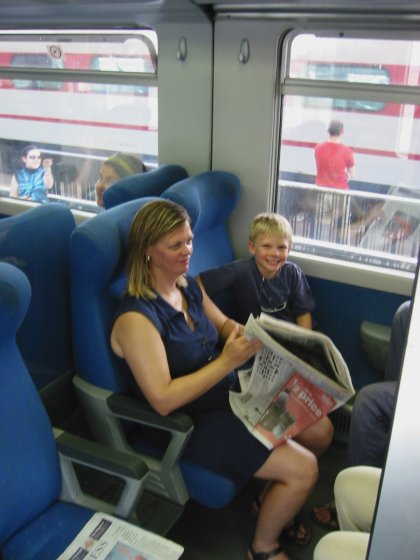
Train Ride
We had to wait around for an hour before the train to Pompeii left, so we stopped for a morning coffee. Once onboard the train, we discovered that the non-smoking compartment was a tiny glassed off enclosure inside a standard car. With less than 20% of the seats for non-smokers it provided a graphic example of how many more people smoke in Italy than in Canada.
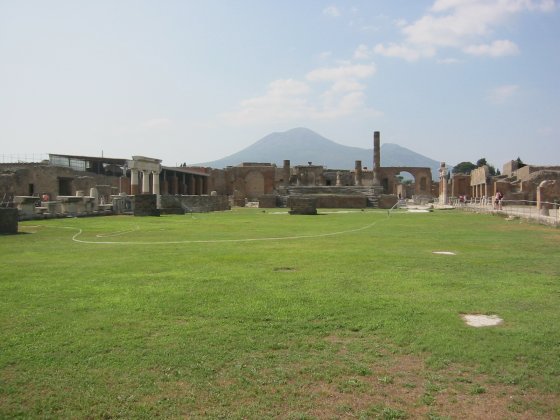
Forum (Mt. Vesuvius in the distance)
By the time we finally arrived in Pompeii, everyone was ready for lunch. Ignoring the taxi driver who was pushing for our business, we walked into the center of the new part of Pompeii and found the tourist information center. From there we found a restaurant for lunch and suitably fortified we finally made our way to the entrance to Pompeii. Because we came from the new part of Pompeii, we went in a little-used side entrance near the amphitheatre.
Pompeii was buried under lapilli (burning fragments of pumice stone) from the nearby Mt. Vesuvius (Vesuvio in Italian) in 79 AD. I had always imagined that Pompeii was practically on the slopes of Vesuvius, but in reality the mountain is quite a distance from the city. The forum was the center of town and surrounded by some of the largest buildings in the city.
For more pictures of our day in Pompeii, visit our Pompeii pictures Web page. We recommend that you look at these before continuing with the description here and after looking at the pictures use your back button to return here.
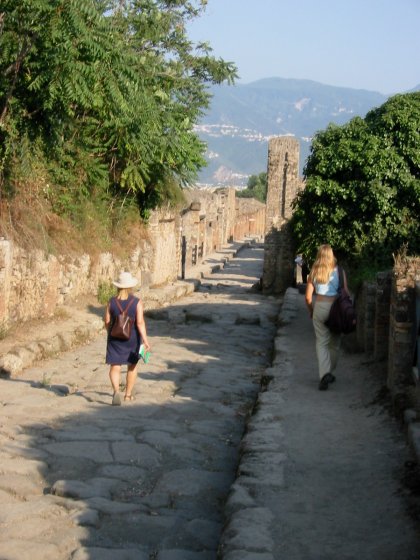
Streets
Pompeii was laid out in a grid pattern with streets at right angles to each other. Streets were sunken with a high curb and sidewalks down each side. Every so often there would be step stones that could be used by pedestrians to cross the street without getting their feet wet in rainwater that would be rushing down the street. The stepping stones are far enough apart that a chariot could still get by with the chariot wheels slipping between the step stones. If you look carefully at the picture above, you can just make out a set of three stepping stones in front of where Karalee is walking.
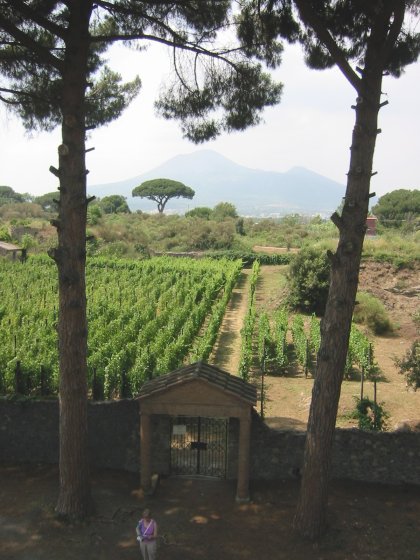
Vineyards (Mt. Vesuvius in the distance)
Pompeii was a walled city which included extensive farming areas outside of the main part of the city. Vineyards were just one of the crops that were grown in the city. The vineyards pictured above are near the Roman amphitheatre. The amphitheatre is the oldest Roman one known and dates from 80 BC.
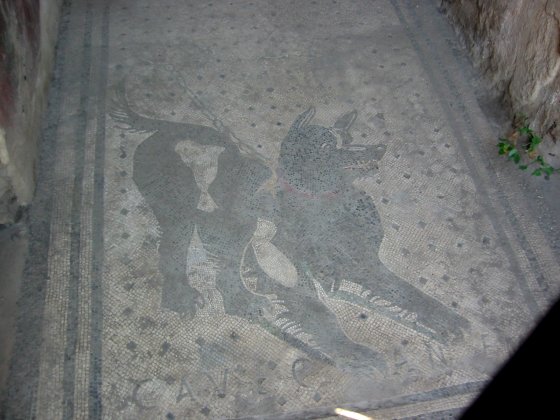
House of the Tragic Poet (inscription Cave Canem means "Beware of the dog")
We explored many streets and buildings and tried to imagine the city filled with people, chariots, and animals living their daily lives. Most of the buildings are unadorned and almost all mosaics have been removed to a museum in Naples. We intentionally avoided Naples as it has a poor reputation among boaters, but we did wish that we had seen the museum before visiting Pompeii. The House of the Tragic Poet was one exception. In the doorway is a welcoming mosaic depicts a watch dog with the inscription Cave Canem (Beware of the dog).
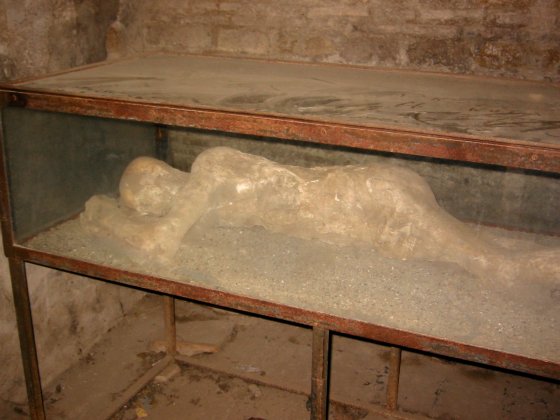
Preserved Body
We visited Roman baths, the temple to Apollo, the town walls to the North, and Villa dei Misteri with its wall frescoes depicting a young bride being initiated to the mysteries of the cult of Dionysus (although we could not actually enter the room with the frescoes itself). We stopped at the theatre and saw the gladiator barracks, but it was the figure of a Pompeii citizen, preserved since 79 AD by hot ash that stopped us in our tracks. The figure was inside a glass case stuck in a back room of one of the buildings. We would have missed it completely if we hadn't made sure to poke around into all of the rooms of the buildings we entered. Many such figures can be seen in the museum in Naples.
As it was getting close to closing time, we retraced our steps towards the amphitheatre, but did a detour through the Necropoli where Pompeii citizens were buried. From there we left via the side entrance that we entered, walked through the new part of town, and caught a very crowded train back to Pompeii where we had a half-hour walk back to Dragonsinger where we had dinner in the evening light of Salerno.
